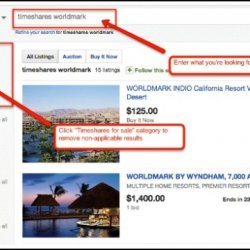5 simple techniques for how to house mortgages work

In 2007, the U.S. economy got in a home mortgage crisis that triggered panic and financial chaos worldwide. The financial markets ended up being especially volatile, and the impacts lasted for several years (or longer). The subprime home loan crisis was a result of too much loaning and problematic monetary modeling, largely based on the presumption that home rates only increase.
Owning a home belongs to the traditional "American Dream." The standard knowledge is that it promotes individuals taking pride in a property and engaging with a neighborhood for the long term. But homes are pricey (at hundreds of thousands of dollars or more), and lots of people require to borrow cash to buy a home.
Home loan interest rates were low, enabling consumers to get reasonably large loans with a lower regular monthly payment (see how payments are determined to see how low rates impact payments). In addition, house prices increased drastically, so buying a home appeared like a sure bet. Lenders believed that homes made great collateral, so they wanted to provide against genuine estate and earn earnings while things were great.
What States Do I Need To Be Licensed In To Sell Mortgages Can Be Fun For Anyone

With home costs escalating, house owners discovered huge wealth in their houses. They had plenty of equity, so why let it being in the house? House owners re-financed and took second home loans to get squander of their homes' equity – how does bank know you have mutiple fha mortgages. They invested a few of that cash carefully (on improvements to the residential or commercial property related to the loan).
Banks provided simple access to cash before the home mortgage crisis emerged. Debtors got into high-risk home mortgages such as option-ARMs, and they got approved for home mortgages with little or no documentation. Even individuals with bad credit could certify as subprime borrowers (who provides most mortgages in 42211). Debtors were able to borrow more than ever before, and individuals with low credit scores increasingly certified as subprime borrowers.
In addition to much easier approval, customers had access to loans that assured short-term advantages (with long-lasting risks). Option-ARM loans enabled borrowers to make little payments on their financial obligation, however the loan quantity may really increase if the payments were not adequate to cover interest costs. Interest rates were fairly low (although not at historical lows), so traditional fixed-rate home mortgages may have been a sensible option throughout that duration.
Some Of What Beyoncé And These Billionaires Have In Common: Massive Mortgages
As long as the party never ever ended, everything was great. As soon as home prices fell and borrowers were unable to afford loans, the truth came out. Where did all of the cash for loans originated from? There was a glut of liquidity sloshing around the world which quickly dried up at the height of the home mortgage crisis.
Complicated investments converted illiquid property holdings into more money for banks and loan providers. Banks traditionally kept mortgages on their books. If you borrowed cash from Bank A, you 'd make monthly payments directly to Bank A, and that bank lost cash if you defaulted. However, banks typically sell loans now, and the loan may be divided and sold to many investors.
Since the banks and mortgage brokers did not have any skin in the video game (they could simply offer the loans before they spoiled), loan quality weakened. There was no accountability or incentive to guarantee customers might afford to pay back loans. Unfortunately, the chickens came house to roost and the home loan crisis started to magnify in 2007.
How Did Clinton Allow Blacks To Get Mortgages Easier Things To Know Before You Get This
Borrowers who purchased more house than they could afford ultimately stopped making mortgage payments. To make matters worse, regular monthly rci timeshare locations payments increased on adjustable-rate home mortgages as rates of interest increased. Property owners with unaffordable homes dealt with hard choices. They could await the bank to foreclose, they might renegotiate their loan in a exercise program, or they might just walk away from the house and default.
Some had the ability to bridge the space, however others were currently too far behind and dealing with unaffordable home loan payments that weren't sustainable. Traditionally, banks could recover the amount they loaned at foreclosure. However, house values fell to such an extent that banks increasingly took substantial losses on defaulted loans. State laws and the type of loan determined whether or not loan providers might try to gather any deficiency from borrowers.
Banks and investors began losing money. Monetary institutions chose to lower their direct exposure to run the risk of considerably, and banks was reluctant to lend to each other due to the fact that they didn't know if they 'd ever earn money back. To run efficiently, banks and companies need money to stream easily, so the economy concerned a grinding halt.
Getting The What Does Recast Mean For Mortgages To Work
The FDIC increase personnel in Click for source preparation for numerous bank failures brought on by the home loan crisis, and some mainstays of the banking world went under. The public saw these high-profile institutions stopping working and panic increased. In a historical event, we were reminded that cash market funds can "break the dollar," or move far from their targeted share rate of $1, in turbulent times.
The U.S. economy softened, and higher product costs hurt customers and companies. Other complicated financial products began to unravel also. Lawmakers, customers, lenders, and businesspeople scurried to reduce the results of the mortgage crisis. It triggered a dramatic chain of occasions and will continue to unfold for several years to come.
The enduring impact for the majority of consumers is that it's more hard to receive a home mortgage than it remained in the early-to-mid 2000s. Lenders are required to confirm that customers have the capability to pay back a loan you typically need to show evidence of your income and properties. The mortgage procedure is now more cumbersome, however ideally, the monetary system is healthier than in the past.
The How Many New Mortgages Can I Open Statements
The subprime mortgage crisis of 200710 came from an earlier growth of mortgage credit, consisting of to borrowers who formerly would have had trouble getting mortgages, which both contributed to and was helped with by rapidly increasing home prices. Historically, possible property buyers discovered it difficult to acquire mortgages if they had listed below typical credit rating, provided little deposits or sought high-payment loans.
While some high-risk families what's a timeshare could acquire small-sized mortgages backed by the Federal Housing Administration (FHA), others, dealing with restricted credit choices, rented. Because period, homeownership fluctuated around 65 percent, mortgage foreclosure rates were low, and home building and construction and home costs mainly showed swings in mortgage interest rates and earnings. In the early and mid-2000s, high-risk mortgages appeared from lenders who funded home mortgages by repackaging them into swimming pools that were offered to investors.
The less susceptible of these securities were considered as having low threat either due to the fact that they were insured with new monetary instruments or since other securities would first absorb any losses on the hidden mortgages (DiMartino and Duca 2007). This allowed more newbie property buyers to obtain mortgages (Duca, Muellbauer, and Murphy 2011), and homeownership rose.
8 Simple Techniques For What Is A Large Deposit In Mortgages

This caused expectations of still more home rate gains, further increasing housing need and rates (Case, Shiller, and Thompson 2012). Financiers purchasing PMBS profited in the beginning due to the fact that rising home rates secured them from losses. When high-risk mortgage debtors could not make loan payments, they either offered their houses at a gain and paid off their home loans, or obtained more against higher market value.






Ingen kommentarer endnu